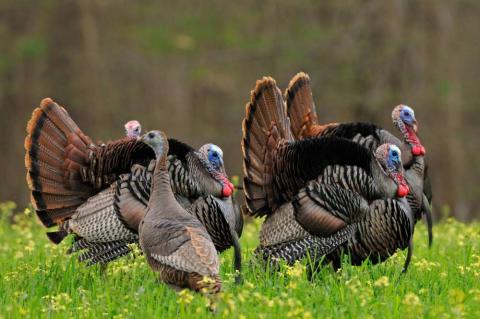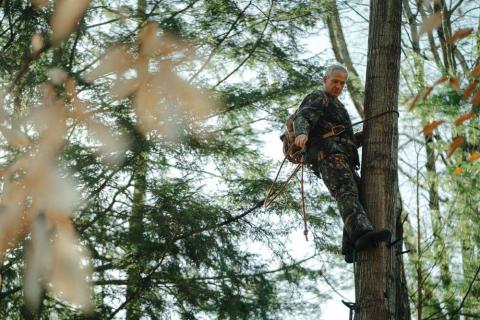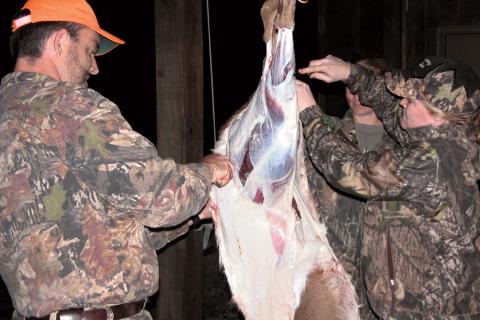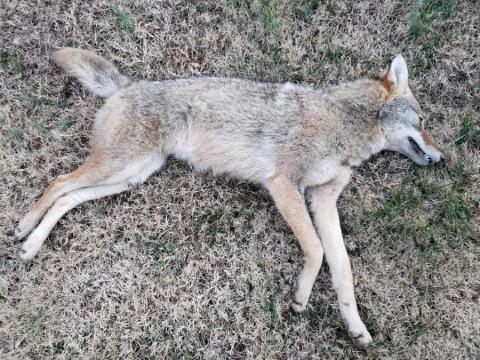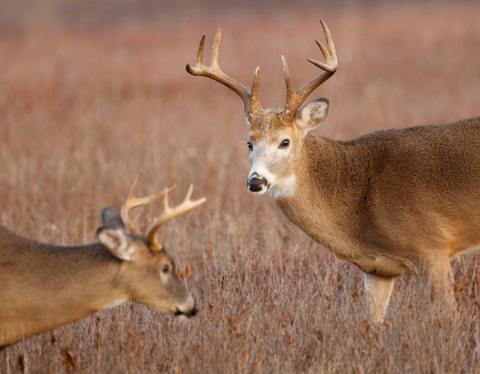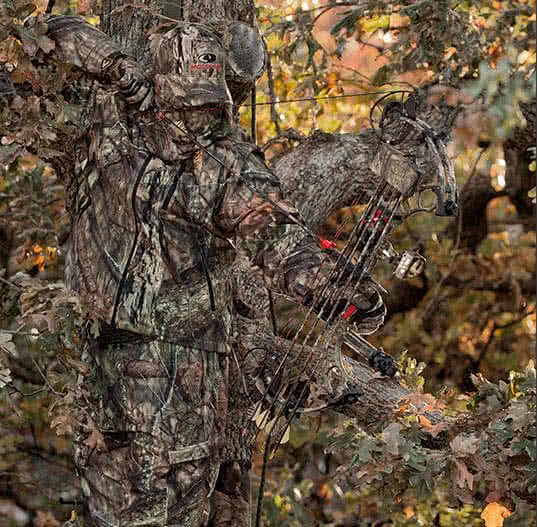By Heath Wood
Adapting tactics is the key to success for hunters in states with late-season turkey opportunities. Gobblers become increasingly wary as the season winds down, requiring strategic adjustments to locate and call them effectively. Understanding late-season turkey behavior and employing clever hunting techniques can be the difference between tagging a tom and returning home empty-handed.
One of turkey hunters' biggest mistakes is losing momentum and confidence before the season begins. I've seen it happen repeatedly over my nearly thirty years of turkey hunting. Some hunters begin to doubt their chances before the season has time to prove itself. They hear gobblers sounding off in the weeks leading up to opening day and assume the peak breeding activity will be over by the time they're allowed to hunt.
But the truth is, turkeys will gobble from early March through the end of May. I often reflect on a particular season when hunting a small farm in southern Missouri. While scouting during the first week of March, I heard several toms lighting up the woods around the property. The hunting season didn’t begin until mid-April but lasted through May's first week. After the season ended, just out of curiosity, my friend who owned the land and I went out early on June 2. To our surprise, we heard three different toms gobbling that morning.
The takeaway is simple: you have the chance to call a tom in as long as turkeys are still gobbling. So don’t throw in the towel before the season even begins. Stay patient, make a few strategic adjustments, and keep hunting. You might be surprised what the season has in store.
Locating Late-Season Birds

As hunting pressure increases and breeding activity slows, turkeys change their patterns, often becoming less vocal and more cautious. Finding these late-season birds requires patience and a keen understanding of their behavior. Yes, toms may not be gobbling forty to fifty times before flying off the roost like they did earlier in the season, but they will still gobble.
To locate less vocal toms, late-season hunters must not rely on gobbling activity as much as they do on finding and scouting fresh sign. Look for dusting areas, fresh droppings, strut zones, and roosting areas, then pinpoint where gobblers are still active and hunt near the documented sign.
To help find toms, glass open areas during the late season. Turkeys often frequent open fields in search of remaining receptive hens, making them easier to spot from a distance. In the early evenings, I like to sit on a high elevated point and watch with my Vortex Viper HD 12X50 binoculars, trying to spot turkeys moments before going to roost. If I spot toms minutes before fly-up time, I return hours before first light and try to sneak in close before they wake up. Having good ground, which means getting into close range, can make late-season toms come to the call more easily.
Adjust Your Timing
Gobblers may gobble a few times early in the morning; however, they are more likely to be active during mid-morning and early afternoons as they search for hens after the initial morning roost activity. It is vital to remember that everything in the late season becomes a bit lower-key. After weeks of breeding activity, including the pecking order earlier in the season, turkeys are becoming worn out. The good news is that hens are beginning to lay their eggs and nest later in the season, leaving the toms lonelier as the morning progresses and the afternoon sets in. Therefore, hunters can also sleep in and hunt later in the day. A lonely mid-day gobbler is much easier to call into close range compared to a tom early in the morning who is roosted near hens and other toms competing for the same prize.
Adjusting Calling Techniques

Overcalling can often spook late-season toms, leaving many hunters trying a more subtle approach. As the season progresses, gobblers have heard about every call in the book, making them less responsive to aggressive tactics.
Soft and sparse calling is usually the best sequence. Use soft yelps, clucks, and purrs to mimic a lonely hen rather than aggressive calling sequences. Late season is one of my favorite times to use scratching the leaves and soft purring as my primary calling choice. Again, everything is more relaxed during this time, so I try to sound like a hen casually feeding through the woods. Curious toms love that sound and often slip in, gobbling only one or two times. Be more patient and let them come.
Using decoys sparingly during the late season is highly effective for tired and pressured gobblers. While decoys work well early in the season, late-season birds can become more cautious. A lone hen decoy can still be effective, but avoid using aggressive tom or jake decoys. Again, be patient; toms may take longer to respond, so resist the urge to move too soon. Give them time to commit before changing locations.
Capitalizing on Searching Longbeards
As most hens finish nesting, gobblers that haven’t bred will continue searching. This makes them more vulnerable to strategic hunting approaches. These lone toms are also where I say hunters can make an exception to calling more.
When hunting the last weekend of the season a few years ago, I found a lone tom on the roost, gobbling more than usual. After years of experience, I learned to read a gobbler’s language and mood from how he gobbles on the roost. After descending a steep riverbank to get closer to the roosting tom, I was stuck about a hundred yards from him due to an open field and a flowing river between us. Because of his eager response to calls that morning, I decided to sit up anyway and try to call. The tom pitched out of the tree approximately fifteen minutes later and headed directly toward my position. The gobbler landed twenty yards before me, then quickly came up the hill, giving me a twelve-yard shot. When they are eager for love and have been lonely for a few days, magic in the woods can happen. When you find an enthusiastic tom, don’t be afraid to ramp up the calling slightly more.
The Challenges and Rewards
Late-season turkey hunting is challenging but highly rewarding. The birds are wary, requiring hunters to fine-tune their tactics and remain patient. However, the reduced hunting pressure and the opportunity to outsmart a seasoned gobbler make for an exciting and fulfilling pursuit.
By understanding turkey behavior, adjusting your calling, and positioning yourself strategically, you can extend your season and increase your chances of success. Whether filling your last tag or simply enjoying the thrill, late-season turkey hunting presents one of the most exhilarating challenges in the field.

















